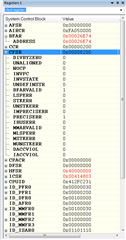Hello Team,
SDK version 4.20
Example :Peripheral_Observer & Simple Central
Device type : Using CC2640R2L mains power based only
Issue :
Runtime device stops executing of functionality and after whatever number of power cycle given to the device but problem remains same. We are using second last sector-30 ( out of Sector 0 to Sector 31 ) for data storage purpose.We read image through Flash programmer from both working & Non working device and compared both which shows all sector data except sector - 30 remains unchanged.Same comparison done with other failure samples which shows same result.
We did some following experiments to reach root cause
1. We tried by exchanging CC2640R2L module from now working PCB to Working PCB then also Working PCB stops working.
2. While downloading image ( bin file ) from non working device and reprogram it with same downloaded image then device start working again.
What could be the issue if flash memory remains same even though it stops working ?
Regards,
Bhavin P



